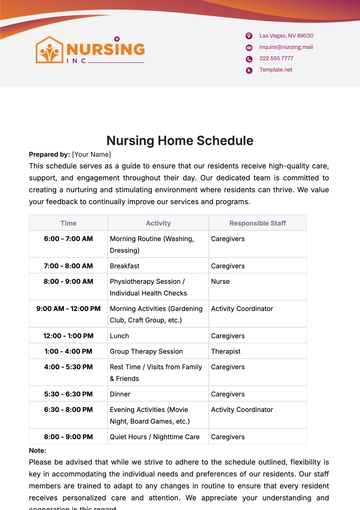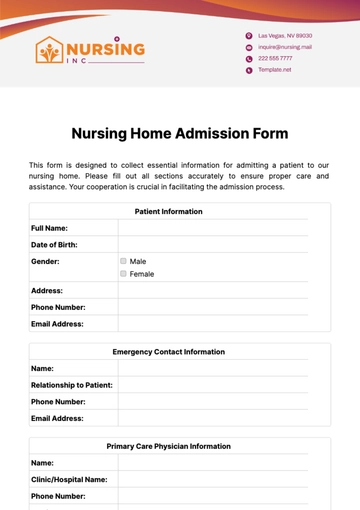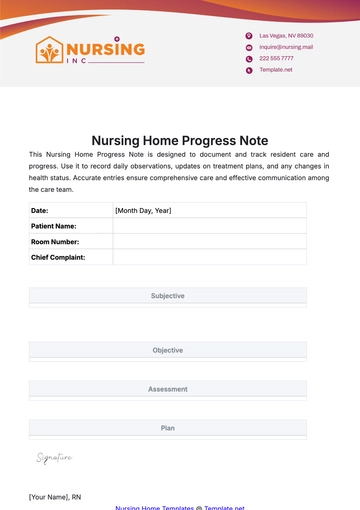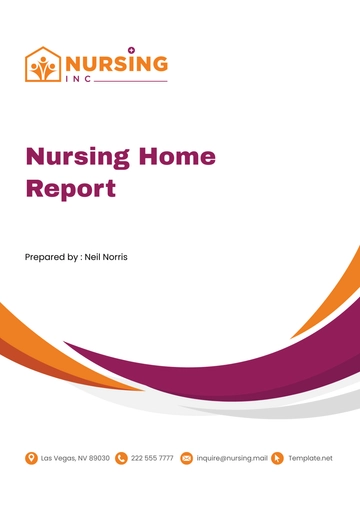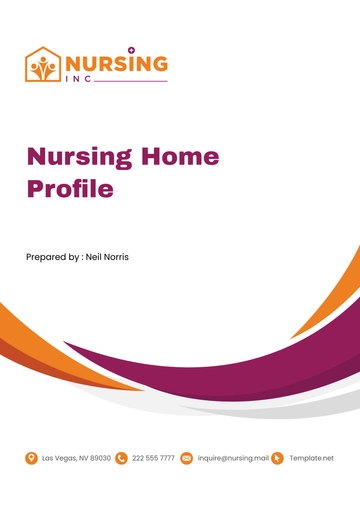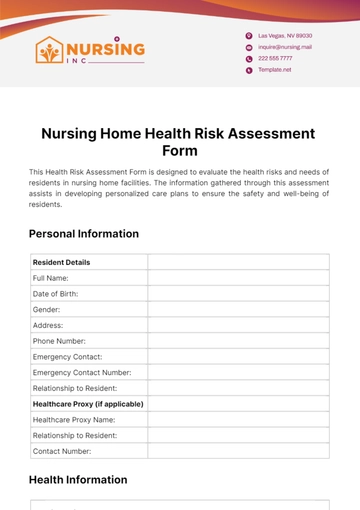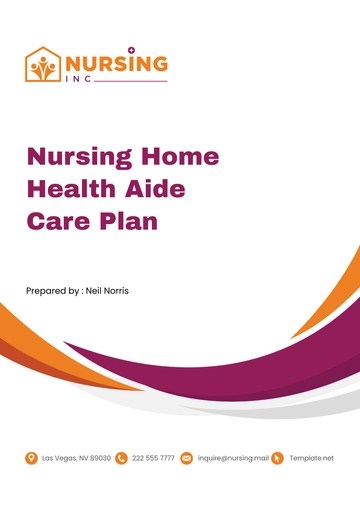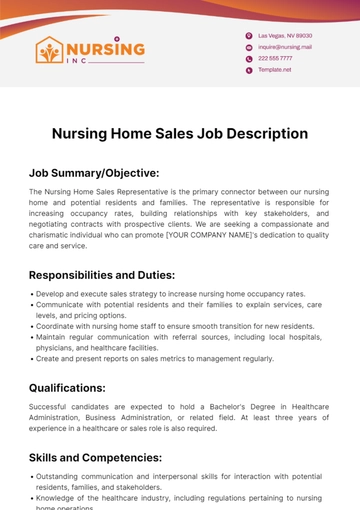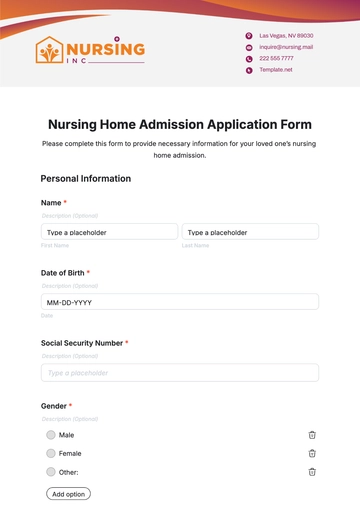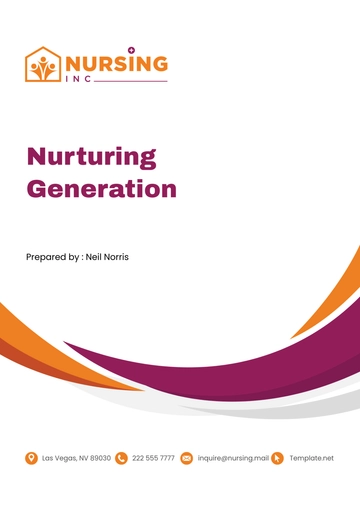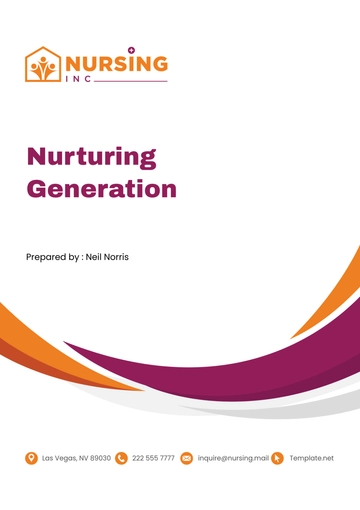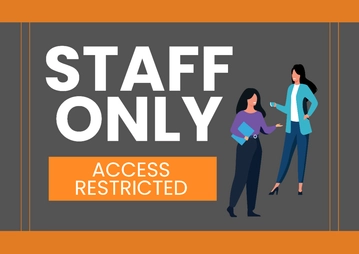Free Nursing Home Chemical Storage Guide
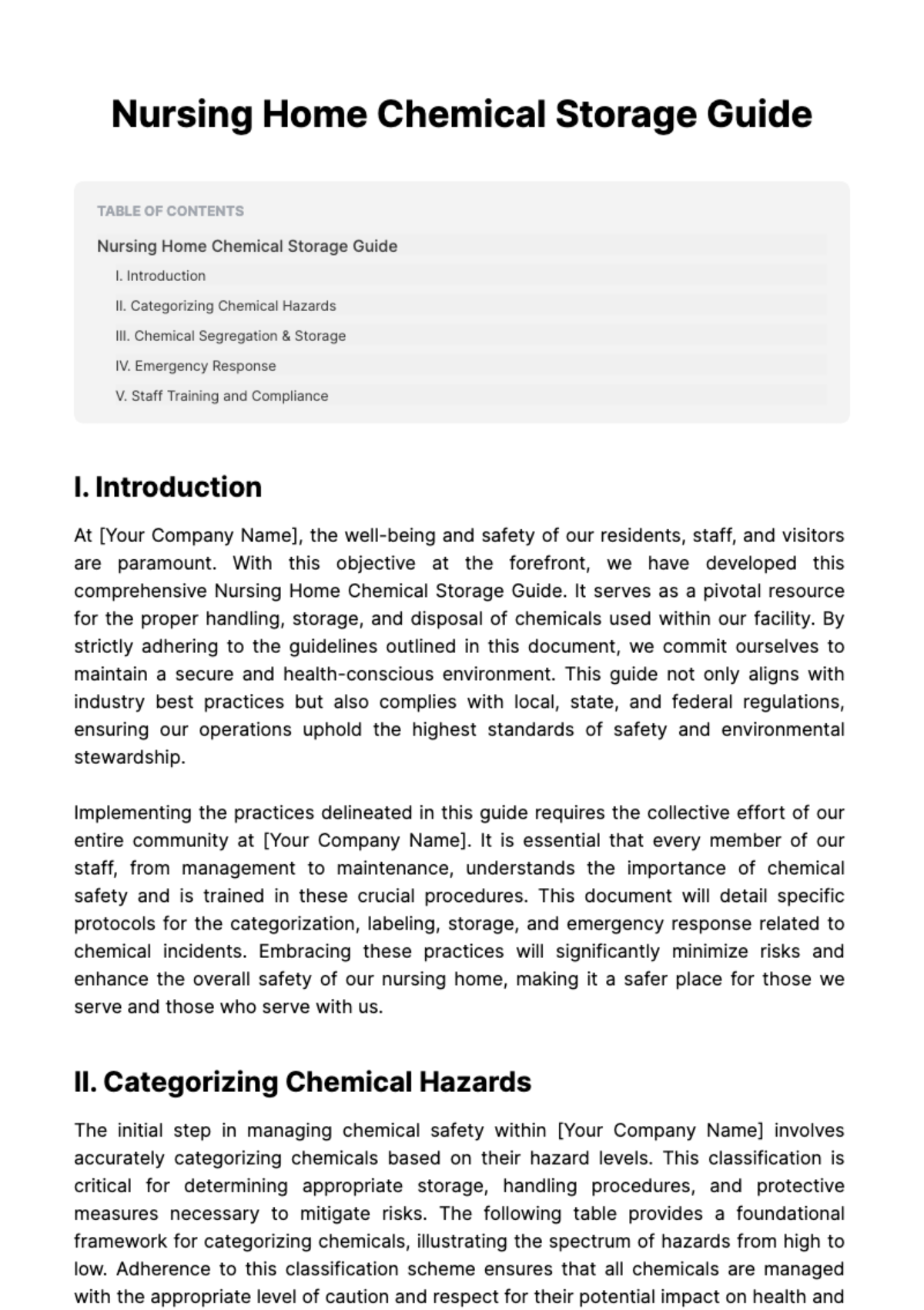
I. Introduction
At [Your Company Name], the well-being and safety of our residents, staff, and visitors are paramount. With this objective at the forefront, we have developed this comprehensive Nursing Home Chemical Storage Guide. It serves as a pivotal resource for the proper handling, storage, and disposal of chemicals used within our facility. By strictly adhering to the guidelines outlined in this document, we commit ourselves to maintain a secure and health-conscious environment. This guide not only aligns with industry best practices but also complies with local, state, and federal regulations, ensuring our operations uphold the highest standards of safety and environmental stewardship.
Implementing the practices delineated in this guide requires the collective effort of our entire community at [Your Company Name]. It is essential that every member of our staff, from management to maintenance, understands the importance of chemical safety and is trained in these crucial procedures. This document will detail specific protocols for the categorization, labeling, storage, and emergency response related to chemical incidents. Embracing these practices will significantly minimize risks and enhance the overall safety of our nursing home, making it a safer place for those we serve and those who serve with us.
II. Categorizing Chemical Hazards
The initial step in managing chemical safety within [Your Company Name] involves accurately categorizing chemicals based on their hazard levels. This classification is critical for determining appropriate storage, handling procedures, and protective measures necessary to mitigate risks. The following table provides a foundational framework for categorizing chemicals, illustrating the spectrum of hazards from high to low. Adherence to this classification scheme ensures that all chemicals are managed with the appropriate level of caution and respect for their potential impact on health and safety.
Hazard Level | Examples | Storage Recommendations | Handling Procedures | Personal Protective Equipment (PPE) |
|---|---|---|---|---|
High Hazard | Corrosive substances, flammable liquids | Secure in ventilated, flame-resistant cabinets; away from direct sunlight and heat sources | Use in well-ventilated areas only; avoid contact with skin and eyes; ensure proper grounding and bonding for flammables | Gloves, goggles, face shield, lab coat, flame-resistant apron |
Moderate Hazard | Non-flammable aerosols, oxidizers | Store in cool, dry areas; separate from high hazard chemicals | Use with caution; ensure compatibility with other chemicals and materials | Gloves, safety goggles |
Low Hazard | Non-hazardous substances, personal care products | Can be stored on general shelving; maintain organization and prevent overcrowding | Handle in accordance with general safety guidelines; avoid ingestion and prolonged skin contact | Gloves (for sensitive skin or prolonged handling) |
This categorization facilitates the development of targeted strategies for chemical management, emphasizing the necessity of specific storage recommendations, handling procedures, and the use of personal protective equipment (PPE). By customizing our approach based on the hazard level, [Your Company Name] ensures a safer environment for all inhabitants and staff members, effectively reducing the risk of accidents and exposure to harmful substances.
III. Chemical Segregation & Storage
Ensuring the safety and well-being of everyone at [Your Company Name] involves meticulous attention to the segregation and storage of chemicals. The protocols outlined below are designed to prevent hazardous reactions and exposures, underpinning our commitment to maintaining a secure environment. Adherence to these guidelines will mitigate risks associated with potentially reactive chemicals, safeguarding our residents, staff, and visitors from harm.
Protocol | Guidelines | Implementation Example |
|---|---|---|
Segregate Incompatible Chemicals | Always keep acids away from bases and oxidizers separate from flammables. Refer to chemical compatibility charts for specifics. | Use separate, labeled cabinets or shelves for each category. |
Store Chemicals at Safe Heights | Ensure all chemicals are stored at or below eye level to prevent spills and facilitate easy, safe handling. | Install shelving with clearly marked height restrictions. |
Use Appropriate Storage Compartments | Utilize flame-resistant cabinets for flammables and corrosive-resistant containers for acids and bases. | Equip storage areas with cabinets that meet NFPA standards for chemical storage. |
Avoid Unmarked Containers | Label all chemical containers with the substance name, hazard level, and handling instructions. | Implement a labeling system that includes barcodes for easy tracking and inventory management. |
Maintain Proper Ventilation | Keep chemical storage areas well-ventilated to prevent the accumulation of hazardous fumes. | Install ventilation systems designed for chemical storage areas, including air filtration and exhaust capabilities. |
By systematically implementing these protocols, [Your Company Name] ensures a structured approach to chemical storage and segregation. This strategic framework not only enhances the safety of our facility but also aligns with regulatory compliance and best practices in healthcare facility management. Through the meticulous organization, clear labeling, and dedicated storage solutions, we minimize the risks associated with chemical interactions and exposures, reflecting our unwavering dedication to the health and safety of our community.
IV. Emergency Response
At [Your Company Name], we understand that despite rigorous safety protocols, incidents such as chemical spills or exposures can occur. Our emergency response strategy is designed for swift action to mitigate risks and protect our community. The following procedures are enforced to ensure a quick and efficient response to such emergencies, underscoring our unwavering commitment to safety.
Procedure | Guidelines | Implementation Example |
|---|---|---|
Evacuate and Isolate the Area | Immediately clear the area of all personnel to prevent exposure. Erect barriers or signs to limit access. | Use mobile barriers and signage to demarcate the affected area quickly. |
Notify Appropriate Personnel | Alert the designated safety officer and management team without delay. If necessary, contact external emergency services. | Implement a rapid communication system, such as an intercom or emergency alert system. |
Use Spill Kits Appropriately | Employ spill kits that are specific to the type of chemical spill, following the instructions carefully. | Store chemical-specific spill kits at strategic locations throughout the facility for quick access. |
Wear Specialized Protective Equipment | Don the appropriate personal protective equipment (PPE) before attempting to manage the spill. | Equip emergency stations with PPE kits, including respirators, gloves, and protective eyewear. |
Follow Proper Disposal Procedures | Contaminated materials and chemicals must be disposed of according to local, state, and federal regulations. | Train staff in the use of designated disposal containers and the documentation required for hazardous waste. |
These protocols are not only a testament to our proactive stance on emergency preparedness but also a vital component of our comprehensive safety strategy. By preparing our staff with the necessary tools, knowledge, and procedures, [Your Company Name] ensures a readiness to act decisively in the event of a chemical spill or exposure. This meticulous approach to emergency response safeguards our residents, staff, and visitors, maintaining a safe and secure environment for all.
V. Staff Training and Compliance
Training is an ongoing process in [Your Company Name]. We recognize that the cornerstone of maintaining a safe environment lies in the continuous education and adherence of our staff to our established chemical safety protocols. To this end, we have instituted a comprehensive training program that encompasses all facets of chemical handling, storage, and disposal procedures outlined in this guide. Below is an overview of our approach to staff training and compliance, ensuring that our team is well-equipped to manage chemicals safely and effectively.
Component | Guidelines | Implementation Example |
|---|---|---|
Regular Training Sessions | Conduct routine training sessions that cover all aspects of chemical safety, including updates to regulations and procedures. | Schedule quarterly workshops and annual refresher courses for all staff members. |
Interactive Learning Modules | Utilize interactive training methods, such as simulations and practical demonstrations, to enhance understanding and retention. | Implement online training platforms with scenario-based learning activities. |
Compliance Monitoring | Establish a system for monitoring and ensuring adherence to safety protocols among staff, including periodic audits and reviews. | Use checklists and audits to assess compliance and identify areas for improvement. |
Certification and Recognition | Provide certification for staff who complete the training program and recognize those who exemplify excellent safety practices. | Award certificates of completion and introduce incentives for outstanding safety compliance. |
Feedback and Improvement | Encourage feedback from staff on the training program and chemical safety protocols to continually refine and improve our practices. | Organize regular feedback sessions and surveys to gather insights from staff. |
Through this structured approach to staff training and compliance, [Your Company Name] aims to foster a culture of safety and responsibility. By keeping our team updated, engaged, and recognized for their commitment to chemical safety, we not only ensure compliance with best practices but also empower our staff to contribute actively to the well-being of everyone in our care. This ongoing investment in education and compliance underscores our dedication to creating and maintaining a secure environment for our residents, staff, and visitors alike.
- 100% Customizable, free editor
- Access 1 Million+ Templates, photo’s & graphics
- Download or share as a template
- Click and replace photos, graphics, text, backgrounds
- Resize, crop, AI write & more
- Access advanced editor
Elevate your document production with Template.net’s Nursing Home Chemical Storage Guide Template. This editable and customizable resource is perfect for streamlining protocols and ensuring safety measures. Crafted for convenience, it's editable in our Ai Editor Tool, providing flexibility to suit your needs. Elevate your documentation process to the next level while ensuring healthcare standards— all with Template.net. Trust us to bring excellence in preparing industry standard templates.



